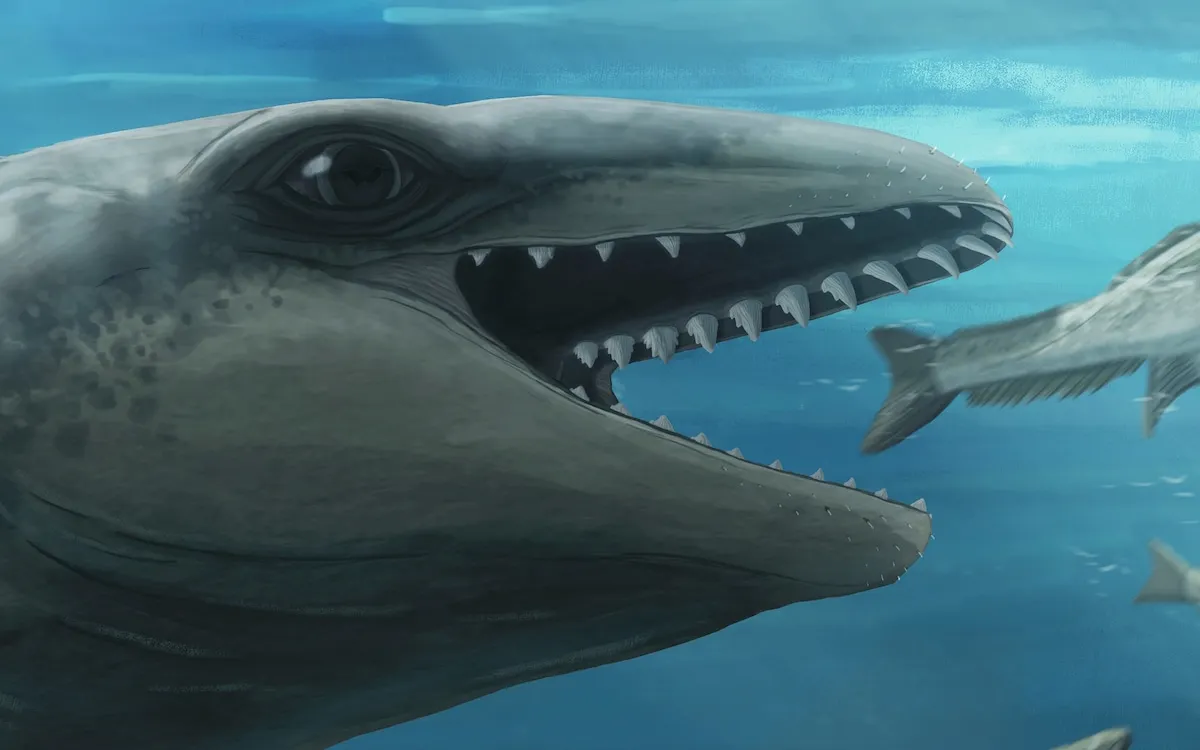
In an exciting breakthrough for paleontology, a 25 million-year-old fossil discovered on an Australian beach has led to the identification of a brand new species of whale. This rare find, named Janjucetus dullardi, offers significant insights into the evolutionary history of whales, revealing a creature that was not only unique but also quite different from the gentle giants we know today.
The fossil was unearthed in 2019 along the fossil-rich stretch of coast in Victoria, Australia. Jan Juc Beach has proven to be a cradle for some of the most unusual whale species in history, making it a hotspot for researchers studying early whale evolution. The discovery was made by amateur fossil hunter Ross Dullard, who stumbled upon a black object protruding from a cliff while searching for fossils at low tide. His curiosity led him to dislodge a tooth, prompting him to send images to Museums Victoria for further analysis.
Researchers have described Janjucetus dullardi as having a cartoonish appearance, featuring bulging eyes similar in size to tennis balls. Unlike modern whales, this juvenile specimen was small enough to fit in a single bed, equipped with sharp teeth and a shark-like snout, making it a fierce predator of its time. According to Erich Fitzgerald, senior curator of vertebrate paleontology at Museums Victoria Research Institute, “It was, let’s say, deceptively cute. It might have looked for all the world like some weird kind of mash-up between a whale, a seal, and a Pokémon, but they were very much their own thing.”
The discovery of Janjucetus dullardi marks only the fourth species identified from a group known as mammalodontids, early whales that existed during the Oligocene Epoch, approximately 34 to 23 million years ago. These tiny predators, believed to have reached lengths of up to 10 feet, represent an early branch on the evolutionary tree leading to today’s massive baleen whales, including humpbacks, blues, and minkes. Fitzgerald notes that these ancient whales would have looked strikingly different from modern species, possibly possessing small stumps where legs would have been.
Finding fossils of sufficient quality to confirm new whale species is a rare occurrence. As Fitzgerald explains, “Cetaceans represent a fairly minuscule population of all life.” Factors such as millions of years of erosion, scavengers, and ocean currents significantly impact the preservation of whale skeletons. “It’s only the chosen few, the vast minority of all whales that have ever lived and died in the oceans over millions of years, that actually get preserved as fossils,” he adds.
For Dullard, the discovery of Janjucetus dullardi has been a life-changing event. After six years of passion and dedication, he expressed his elation, stating, “It’s literally been the greatest 24 hours of my life.” Following the official confirmation of the new species, he was welcomed back to his school with excitement and high fives. To celebrate, he planned a fossil-themed party featuring cetacean games and whale-shaped treats in jello, marking the culmination of his long and dedicated search.
Findings such as Janjucetus dullardi are crucial for understanding how prehistoric whales lived, hunted, and adapted to changing environments. These discoveries not only shed light on the evolutionary journey of whales but also provide valuable insights into how ancient cetaceans may have adapted to warmer oceans, informing current studies on how today’s marine life might respond to climate change.